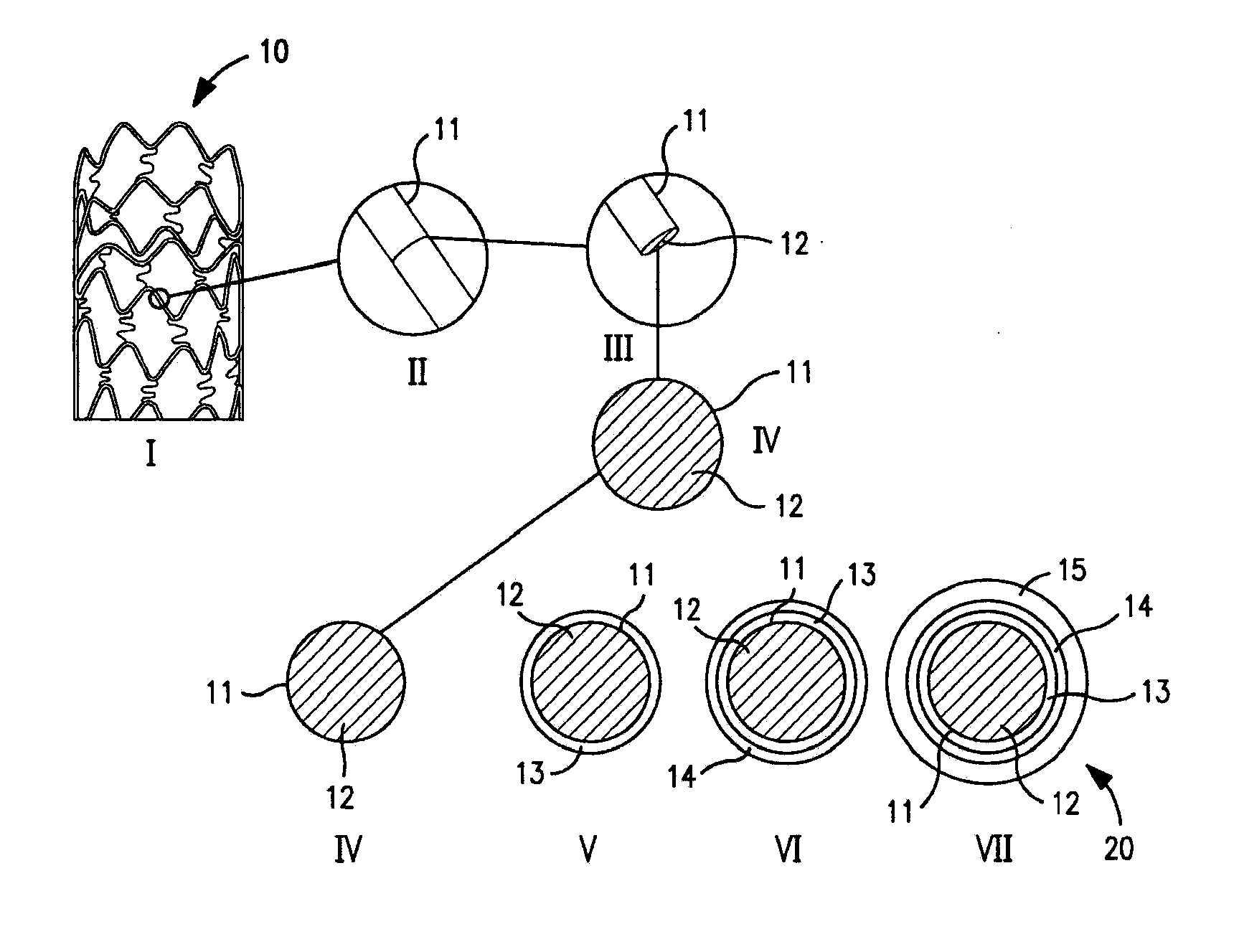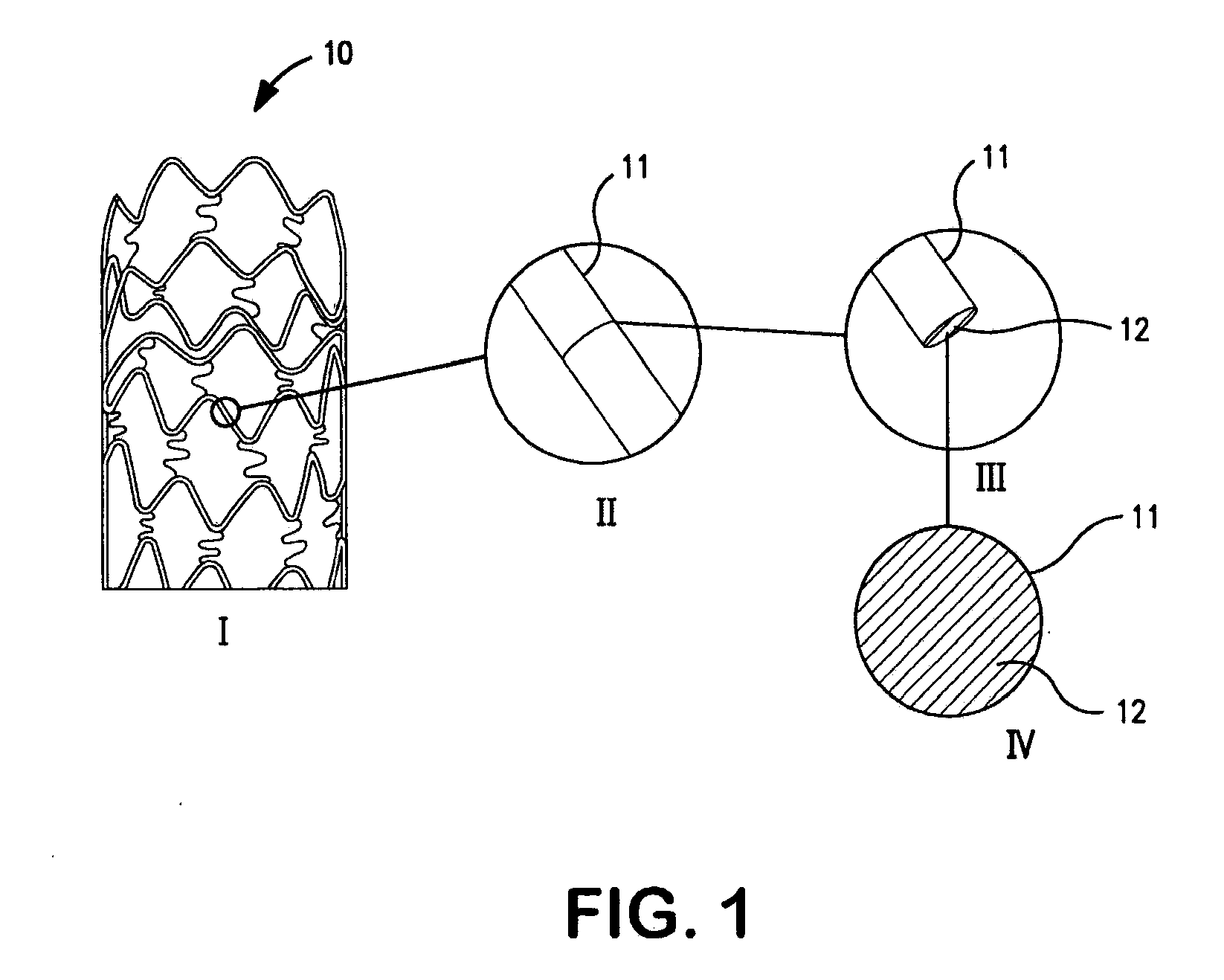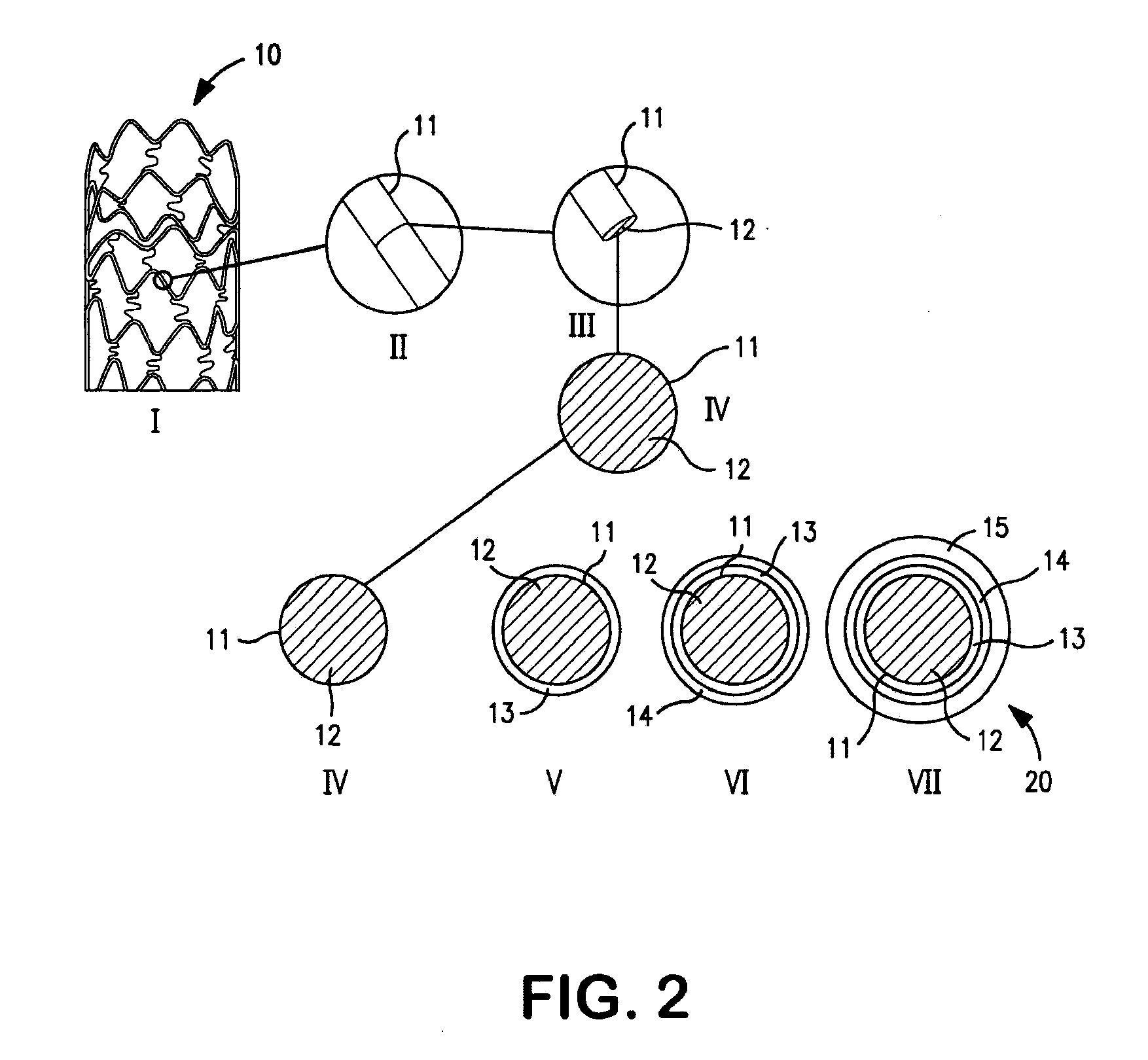Multiple drug-eluting coronary artery stent for percutaneous coronary artery intervention
a technology of percutaneous coronary artery and stent, which is applied in the field of multi-drug-eluting tubular vascular implants, can solve the problems of inability to uniformly treat the affected vessel, irradiation of the treated vessel can pose safety problems for the physician and the patient, and treatment with these agents does not appear to have a long-term effect on preventing restenosis, etc., to suppress neovascularization, prevent acute thrombosis, and promote normal
- Summary
- Abstract
- Description
- Claims
- Application Information
AI Technical Summary
Benefits of technology
Problems solved by technology
Method used
Image
Examples
example 1
Agents: Paclitaxel, Sirolimus, Fibronectin, and Anti-PDGF Monoclonal Antibody
[0145]Delivery Methods:
[0146]1. Experimental Stent Delivery Method—Delivery from Polymer Matrix:
[0147]Solutions of the agents for the different layers, prepared in a solvent miscible with polymer carrier solution, are mixed with solution of polymer at final concentration range 0.001 weight % to 30 weight % of paclitaxel and sirolimus. Polymers are biocompatible (i.e., not elicit any negative tissue reaction or promote mural thrombus formation) and degradable, such as lactone-based polyesters or copolyesters, e.g., polylactide, polycaprolacton-glycolide, polyorthoesters, polyanhydrides; poly-amino acids; polysaccharides; polyphosphazenes; poly(ether-ester) copolymers, e.g., PEO-PLLA, or blends thereof. Nonabsorable biocompatible polymers are also suitable candidates. Polymers such as polydimethylsiolxane; poly(ethylene-vingylacetate); acrylate based polymers or copolymers, e.g., poly(hydroxyethyl methylmetha...
PUM
| Property | Measurement | Unit |
|---|---|---|
| melting temperature | aaaaa | aaaaa |
| melting temperature | aaaaa | aaaaa |
| melting temperature | aaaaa | aaaaa |
Abstract
Description
Claims
Application Information
 Login to View More
Login to View More - R&D
- Intellectual Property
- Life Sciences
- Materials
- Tech Scout
- Unparalleled Data Quality
- Higher Quality Content
- 60% Fewer Hallucinations
Browse by: Latest US Patents, China's latest patents, Technical Efficacy Thesaurus, Application Domain, Technology Topic, Popular Technical Reports.
© 2025 PatSnap. All rights reserved.Legal|Privacy policy|Modern Slavery Act Transparency Statement|Sitemap|About US| Contact US: help@patsnap.com



